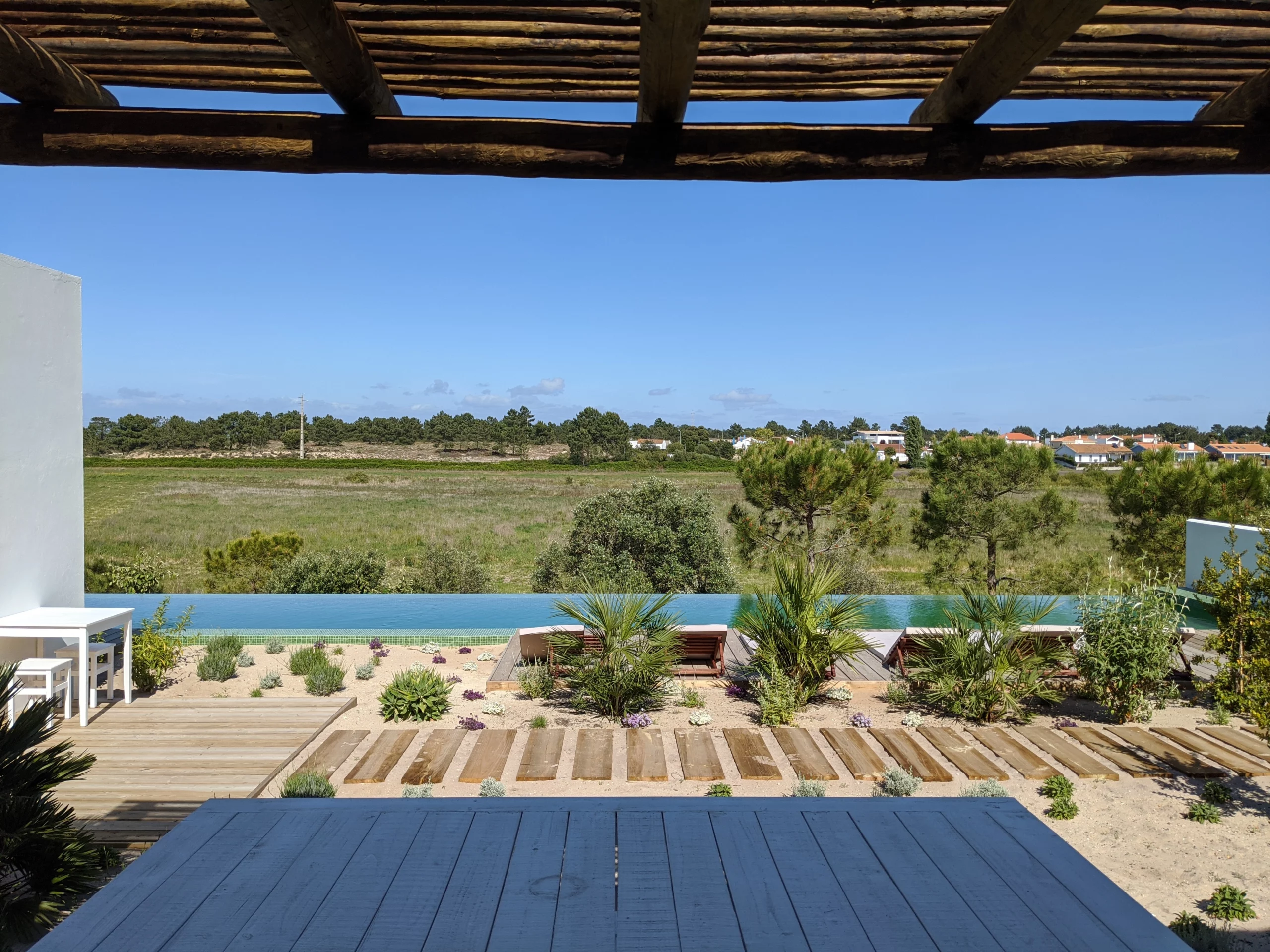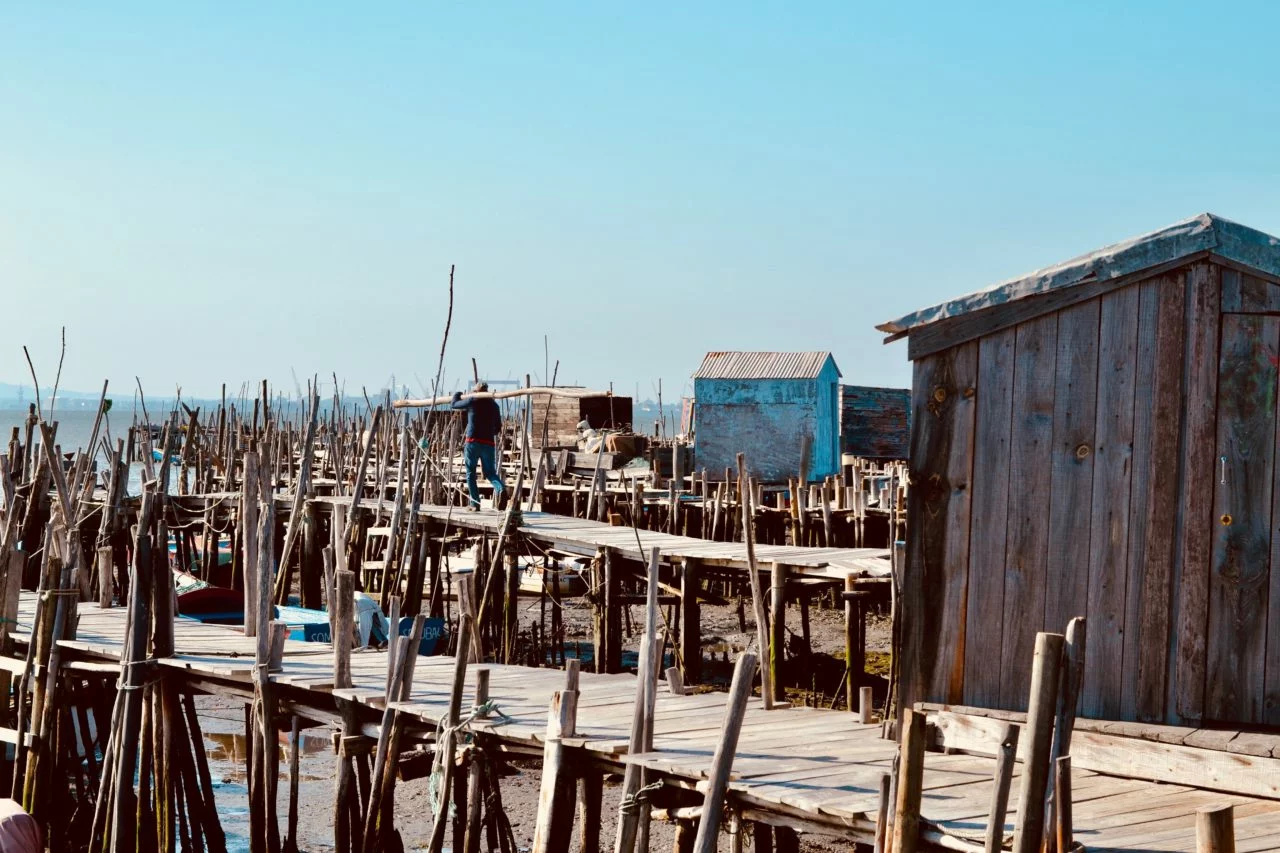

Discover the historic city Alcácer do Sal
If you are on holiday in Comporta for a week or more, don’t hesitate to take a walk in and around the villages of Herdade da Comporta. Alcácer do Sal is, for example, a charming village typical of the Alentejo not to be missed.
If you are leaving Lisbon, you can stop at Alcácer do Sal on the way to Comporta. This stopover will allow you to discover one of the oldest cities in Portugal, gracefully located on the right bank of the Sado River. It is famous for its many historical monuments, as well as for the magnificent rice fields that stretch over the horizon.
History of the city
Alcácer do Sal in Alentejo was founded more than a thousand years before Christ by the Phoenicians. Its Roman name was Salacia. It had a significant economic importance because its unrivalled location on the banks of the Sado River facilitated the flow of agricultural products produced on the land (wheat, olive oil and wine) to other places in the Mediterranean occupied by the Romans. Thus, Alcácer was one of the most important cities in the peninsular West possessed an inland port and was known for its salt production and for the industries derived from curing and fish paste.
During the period of Arab rule (from the 8th century onwards), Alcácer do Sal was the capital of Al-Kassr province. The walls of the old fortification were reinforced and the castle was also built at that time. Although it has lost its military and commercial importance, Alcácer do Sal retains its brilliant beauty and is now developing in tourism.
What to do in Alcácer do Sal?
Strolling through the streets of the old city
A walk in Alcácer do Sal is the best way to discover the most charming part of this city. Stroll through its small streets and numerous stairs leading to the castle to admire a spectacular view. On the way you can visit many interesting monuments such as the Church of Santa Maria do Castelo, the Chapel of Senhor dos Mártires, the Church of Santo António, the Church of Santiago and the Municipal Museum of Archaeology.
Admiring the reflection of the city on the river
The sunset is a moment not to be missed in Alcacer do Sal. To enjoy the beautiful colours on the bridges, cross the Sado River and sit on the other side of the river. Here you have an incredible view of the river, the two bridges, the boats, the castle and the white houses. This is the perfect time to take pictures.
Navigating the estuary
The municipality organizes cruises along the Sado River in summer. These day trips, or half-day trips, take place on board the old sailboats Pinto Luisa or Amendoeira.
During the one-day cruise, you will cross the Sado estuary and moor in Setúbal or on the beautiful beaches of the Tróia Peninsula. With any luck, you’ll come across the dolphins that are the scourge of fishing boats in the estuary as they chew their nets to steal their catch!
Alcácer do Sal Castle
The name of the city is linked to this castle: Alcácer is a derivative of the word “Al-Kassr” which means castle in Arabic. The castle, surrounded by two walls, has a typical Portuguese pousada and an archaeological museum that tells the 26 centuries of history of the city.
From the top of the castle the view is breathtaking. We discover the narrow streets and bleached houses that flow into Sado, the bridges and the famous green rice fields of the region that run on the horizon.
In the castle you will also have access to an archaeological crypt. It is considered one of the largest in the country. The structures of the Roman period and Islamic occupation are discovered, covering a considerable area.
The church of the convent of Saint António
The convent was founded in 1524. You can discover a pretty classic style church. The dome, in Renaissance style, is remarkable.
The church of Senhor dos Martíres
It is one of the oldest Christian sanctuaries in Portugal. It is known for the mysterious emblems engraved on its walls and for its various chapels that open through the central body of the temple.
The Misericórdia Church
According to an inscription on one of the portals, this church was consecrated in 1547. What is out of the ordinary is the choir and the nave, which are integrated in the same space. The interior walls are decorated with stucco and azulejos painted in the 1600s.
The famous painter Francisco Flamengo painted the ceiling fresco in 1895. It represents the three virtues of hope, faith and charity.
Where to eat?
A Escola
This restaurant is located in an old school. It is a must and one of the best establishments in and around the city. It serves meat and fish dishes typical of the Alentejo. Rabbit or partridge pate with coriander served in a clay pot is a specialty appreciated by regulars.
Estrada Nacional 253 – Alcácer do Sal / +351 265 612 816
O Brazão
This restaurant is located in an old 18th century blacksmith’s workshop in the city centre. Wild boar steak is their specialty. He’s the owner of the restaurant who hunts wild boars in person.
Largo Prof. Dr. Francisco Gentil – Alcácer do Sal / +351 265 622 576
What memories to bring back?
Alcácer do Sal’s culinary speciality is pine nuts. It is indeed the leading producer of pine nuts in Portugal and you can buy whole bags of them! Many of the city’s recipes and sweets, such as “pinhoadas”, are made with this ingredient.
The bread of Torrão, in the east of the municipality, as well as its olive oil are renowned for their high quality.
Around Alcácer do Sal
Within a radius of 30 km, you will find the very charming cities of Aldeia de Santa Susana, Porto de Rei and Torrão. The Vale do Gaio Dam is also noteworthy for a country picnic in a bucolic setting.
For more information on this subject
The tourist office will inform you about the essential monuments not to be missed, as well as about the summer river walks.
Largo Luís de Camões – Alcácer do Sal / +351 265 247 013
Comporta Erfahrung

Die besten Orte in der Nähe von Lissabon
Lissabon ist die Hauptstadt Portugals und hat eine Menge zu bieten. Sie ist bekannt für ihre 7 Hügel. Ziehen Sie bequeme Schuhe an, denn wenn Ihr Ziel ist, zu Fuß zu gehen, werden Sie Ihr Ziel erreichen. Aber jede Anstrengung wird belohnt. Die Stadt bietet herrliche und kinematografische Aussichten. Es ist eine Stadt mit viel

Comporta: Stilvolle Erkundung der Vicentina-Küste
Die Vicentina-Küste, ein faszinierender Küstenabschnitt im Südwesten Portugals, bietet eine seltene Mischung aus ungezähmter Schönheit und küstennahen Reizen. Diese Region, die durch dramatische Klippen, einsame Buchten und sanfte Hügel gekennzeichnet ist, fängt die Essenz von Portugals natürlicher Pracht ein. Inmitten dieses Küstenparadieses liegt Comporta, ein verstecktes Juwel, das Entspannung und Authentizität verkörpert. An der Küste

CAIS PALAFÍTICO DA CARRASQUEIRA
In Comporta befindet sich ein Hafen, der auf Stelzen balanciert, unberührt von der Zeit und schwebend zwischen Himmel und Meer. Er befindet sich in Carrasqueira am Fluss Sado, von dem aus Alcácer do Sal beginnt. Dieser kleine Fischereihafen ist auf einer Ansammlung von rauen Anlegestellen aus durchbrochenen Brettern gebaut, die auf Stelzen ruhen. EIN PARADIES
